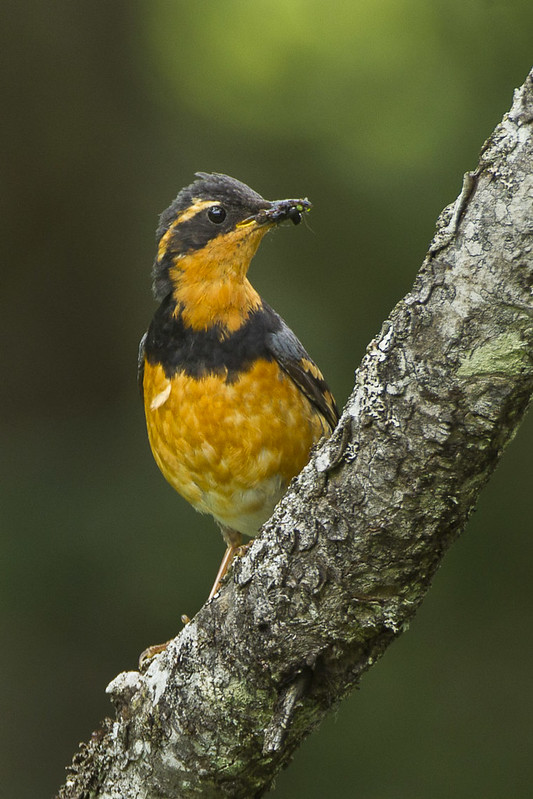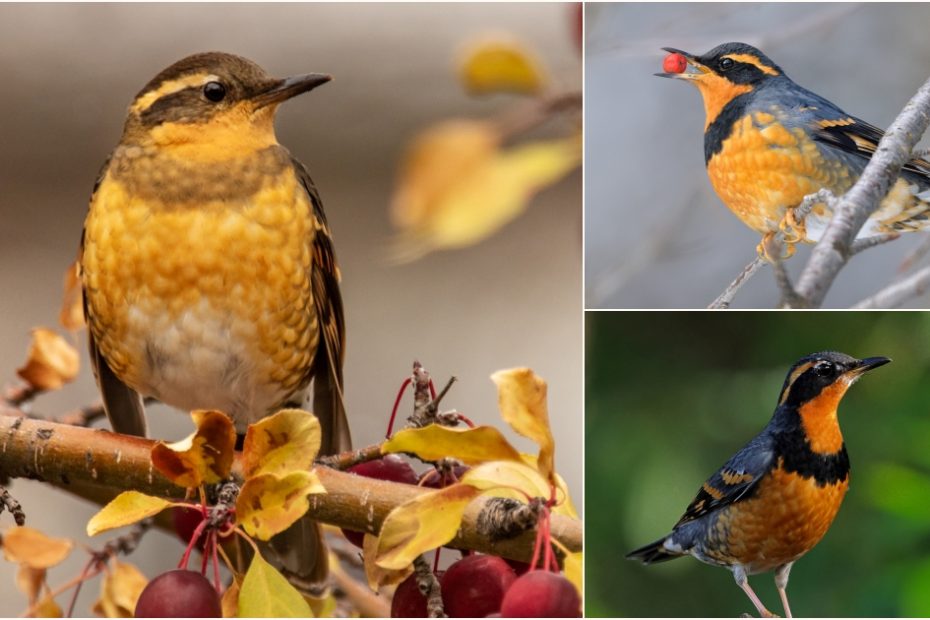
The female Varied Thrush closely mirrors the male’s appearance, although she appears duller in comparison, with a gray chest band.
The juvenile displays similarities to the female, yet boasts a whitish belly and a throat and breast with a scaly-looking pattern.

Breeding predominantly in western North America, the Varied Thrush’s range extends from Alaska down to northern California.
Commonly found in dense and moist woodlands, particularly coniferous forests, the Varied Thrush winters in woodlands, parks, and gardens.

As avid ground feeders, Varied Thrushes sustain themselves with insects and berries, often foraging among leaf litter for nourishment. During winter, they primarily feed on berries, seeds, and acorns. In the summer months, their diet shifts towards insects and other invertebrates.

When it comes to nesting, Varied Thrush females typically construct open cup-shaped nests in low bushes, near streams, or in trees at the base of a branch close to the trunk. Crafted from an assortment of twigs, leaves, lichens, and bark, the nest becomes a sanctuary for the upcoming generation. After laying a clutch of 1-5 eggs, which exhibit a greenish-blue hue mottled with brown, the female incubates them for 12-14 days. Upon hatching, the young are fed by both parents and eventually fledge at around 13 to 15 days.



While Varied Thrushes face threats from deforestation and clear-cutting, they have not yet reached the status of endangered in any portion of their range. As they continue to grace the Pacific Northwest with their unique beauty and enchanting calls, these birds remind us of the precious diversity found in the natural world.




